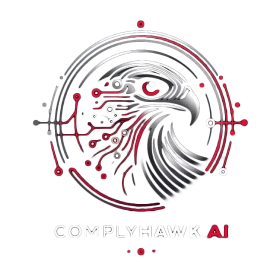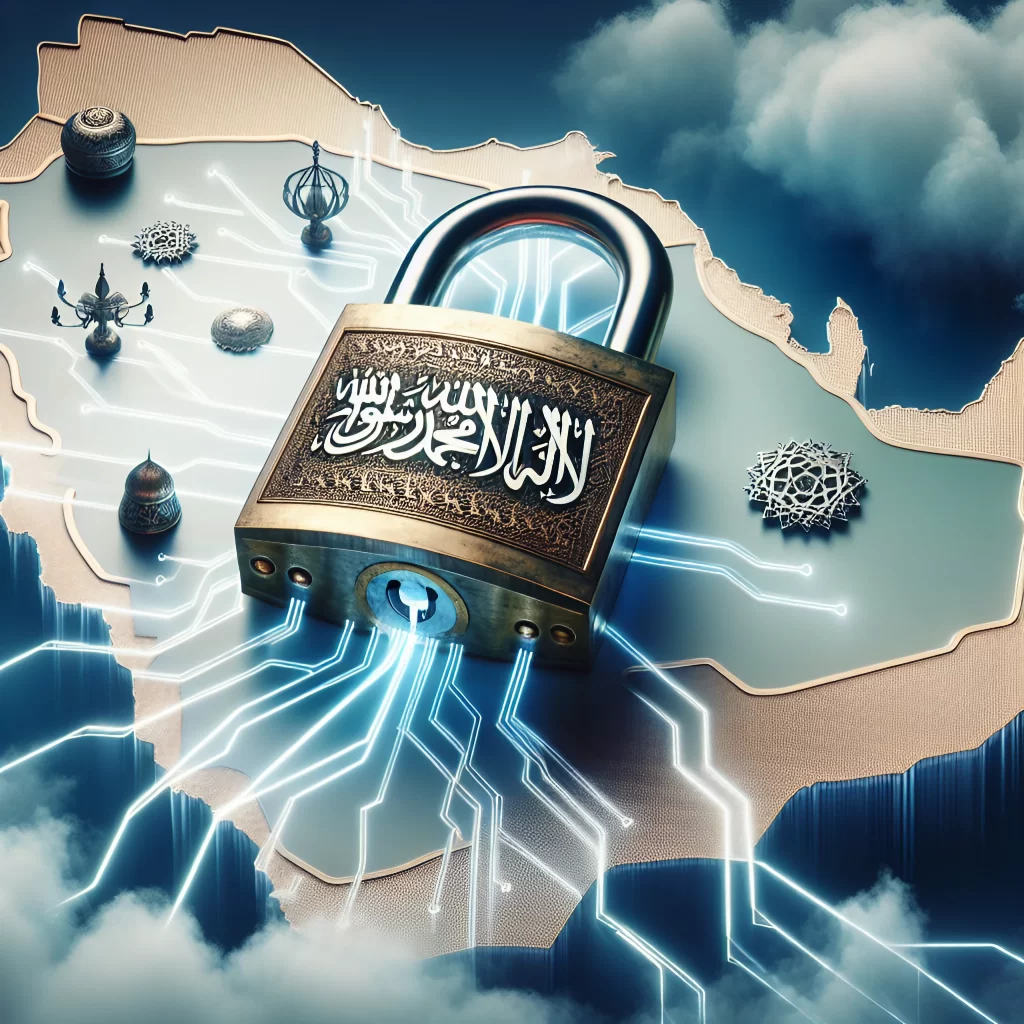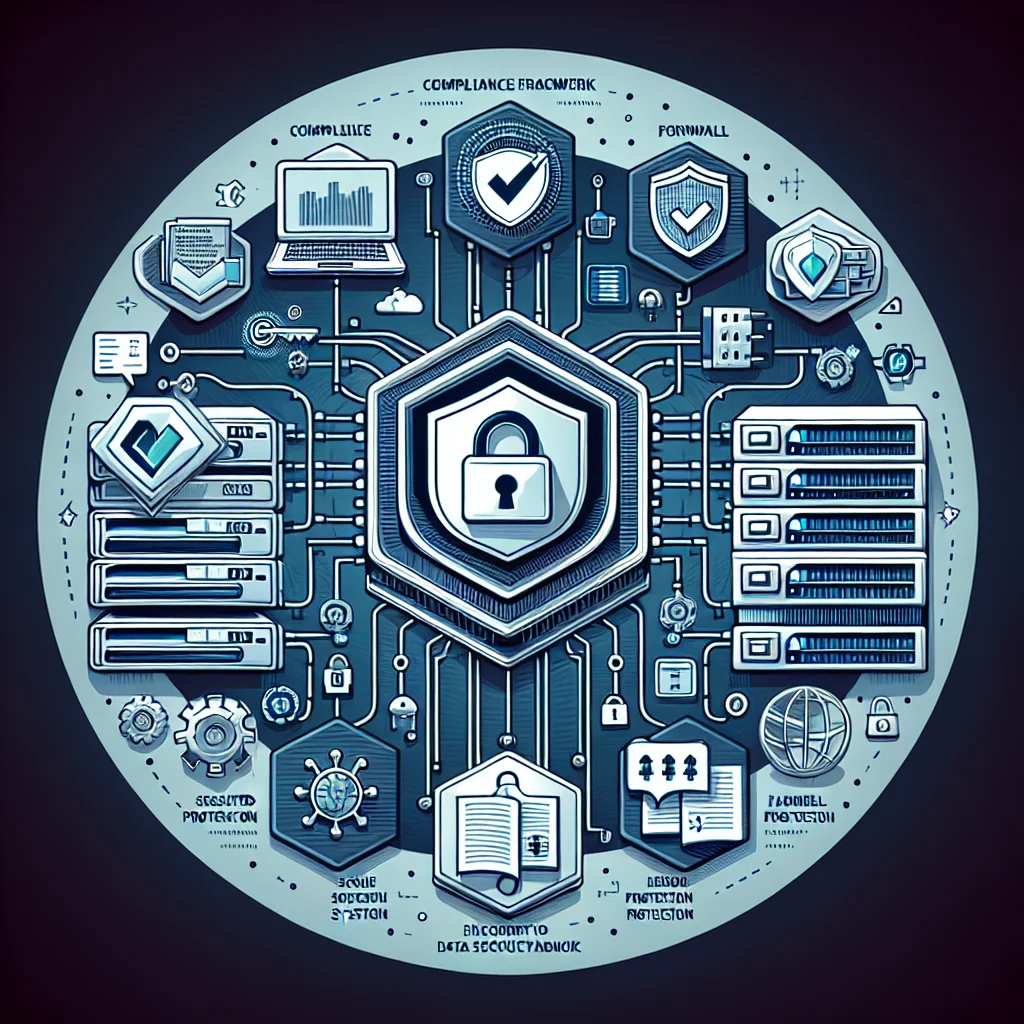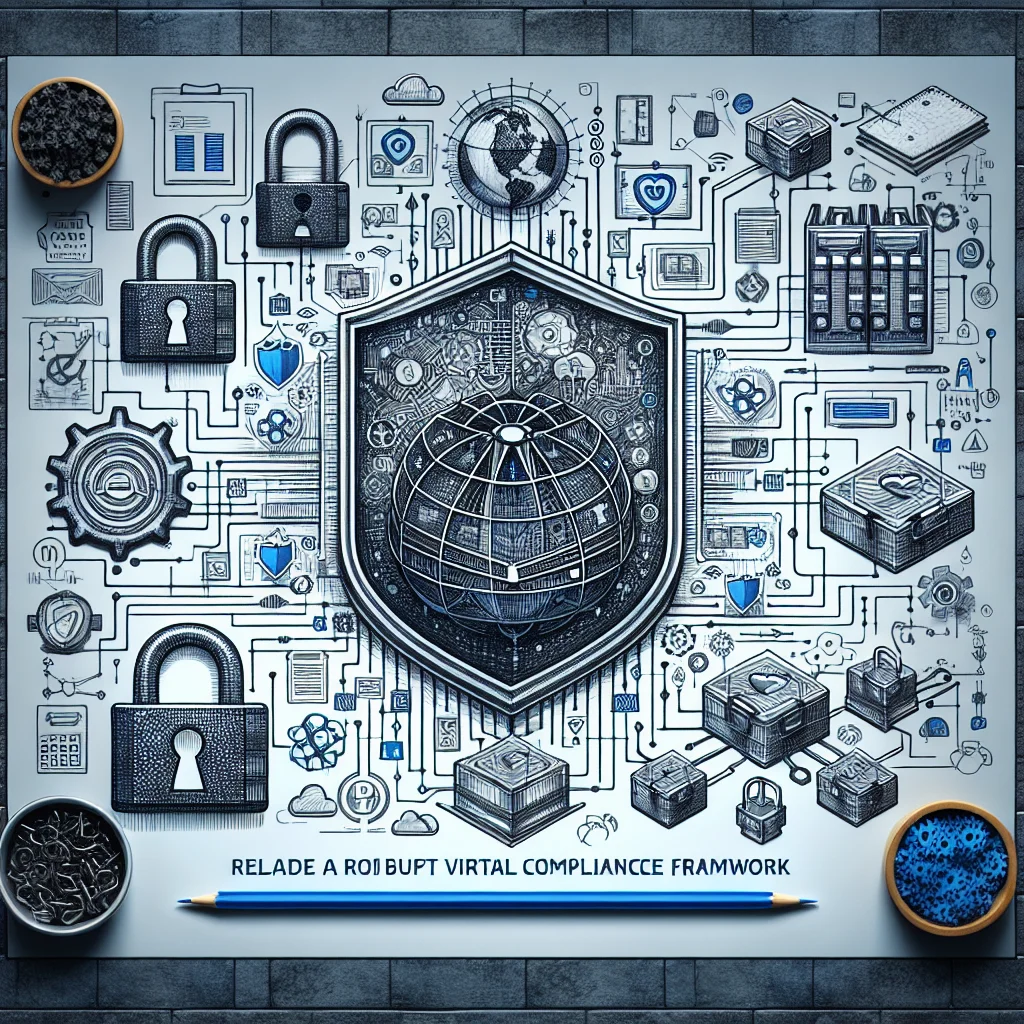In today’s digital age, cloud security is paramount. Despite their advantages, cloud environments have unique vulnerabilities that require robust security measures. ISO 27017, a standard providing guidelines for information security controls applicable to the provision and use of cloud services, is becoming a significant focus for CISOs, particularly in the Middle East.
Understanding ISO 27017
ISO/IEC 27017 is an international standard that provides guidelines for information security controls applicable to the provision and use of cloud services. It builds on the foundations laid by ISO/IEC 27001 and includes additional controls specific to cloud security. The standard aims to ensure that organizations adequately address risks associated with their use of cloud services and have a solid security framework in place.
The ISO 27017 standard covers three main areas: the cloud service user, the cloud service provider, and the relationship between them. It provides guidance on how to manage risks related to data protection, access control, incident management, and other critical aspects of cloud security.
Data Residency and Cloud Security in Saudi Arabia
As countries in the middle east such as Saudi Arabia continues to embrace digital transformation, data residency has become a critical concern for organizations operating within the kingdom. Data residency refers to the physical or geographic location where data is stored and processed, and in Saudi Arabia, regulatory bodies impose strict guidelines to protect sensitive information. The Saudi Data and Artificial Intelligence Authority (SDAIA) and other relevant authorities emphasise that data related to citizens and residents must be stored within the country’s borders to enhance security and compliance.
Cloud service providers must align their offerings with these data residency requirements by ensuring that data centers operate locally, enabling organisations to maintain control over their data while adhering to national regulations. Implementing robust cloud security measures is essential to protect data against unauthorized access and breaches.
This includes encryption practices, access controls, and continuous monitoring to safeguard sensitive information. By following these guidelines, businesses in Saudi Arabia can leverage cloud technology while ensuring compliance with data residency laws and security protocols.
Frequently Asked Questions (FAQs) about ISO 27017
1. What is ISO 27017?
ISO 27017 is a set of guidelines for cloud-specific information security controls, designed to provide additional guidance on implementing ISO 27002 controls in cloud environments.
2. How does ISO 27017 differ from ISO 27001 and ISO 27002?
While ISO 27001 and ISO 27002 provide a general framework for information security management systems, ISO 27017 adds cloud-specific controls and guidance, addressing the unique security challenges posed by cloud computing.
3. Who should consider implementing ISO 27017?
Any organization using or providing cloud services should consider implementing ISO 27017 to ensure robust cloud security practices.
4. What are the benefits of ISO 27017 certification?
Certification demonstrates a commitment to cloud security, enhances customer trust, and provides a competitive advantage in the marketplace.
5. How does ISO 27017 integrate with other standards like PCI-DSS?
ISO 27017 can complement PCI-DSS by providing additional cloud-specific controls, particularly useful for organizations handling payment card data in the cloud.
6. What are the common controls between ISO 27017 and ISO 27001?
Both standards share controls related to access management, data protection, and incident management, with ISO 27017 adding specific guidance for cloud environments.
7. How can ISO 27017 help in regulatory compliance?
ISO 27017 supports compliance with various regulatory requirements by providing a structured approach to managing cloud security.
8. What are the key challenges in implementing ISO 27017?
Challenges include understanding the specific requirements of the standard, integrating it with existing security frameworks, and managing the ongoing maintenance of controls.
9. How long does it take to implement ISO 27017?
The implementation timeline can vary depending on the organization’s size, complexity, and existing security posture, but it typically ranges from several months to over a year.
10. Do we need external consultants to implement ISO 27017?
While not mandatory, external consultants can provide expertise and guidance, ensuring a more efficient and effective implementation process.
11. What role does the CISO play in ISO 27017 implementation?
The CISO leads the implementation, ensuring alignment with organizational goals, managing resources, and overseeing compliance efforts.
12. What are the documentation requirements for ISO 27017?
Organizations must document their cloud security policies, procedures, and controls, providing evidence of their implementation and effectiveness.
13. How does ISO 27017 address data sovereignty issues?
The standard provides guidance on managing data location and jurisdictional requirements, crucial for organizations operating in regions with strict data sovereignty laws.
14. What are the cost implications of ISO 27017 implementation?
Costs can include internal resource allocation, external consultancy fees, training, and certification expenses.
15. Can ISO 27017 be integrated with existing security frameworks?
Yes, ISO 27017 is designed to integrate seamlessly with existing frameworks like ISO 27001, enhancing overall security posture.
16. What are the continuous improvement requirements for ISO 27017?
Organizations must regularly review and update their cloud security controls, adapting to evolving threats and changing business needs.
17. How does ISO 27017 impact cloud service providers?
Cloud service providers must implement ISO 27017 controls to ensure they meet the security expectations of their clients.
18. What are the audit requirements for ISO 27017?
Regular internal and external audits are required to assess compliance with the standard and identify areas for improvement.
19. How does ISO 27017 address incident response?
ISO 27017 provides specific guidance on incident response in cloud environments, ensuring timely and effective handling of security incidents.
20. What are the key success factors for ISO 27017 implementation?
Success factors include strong leadership, clear communication, adequate resources, and ongoing commitment to cloud security.
Where to Start with ISO 27017
Starting with ISO 27017 can seem daunting, but a structured approach can simplify the process:
1. Conduct a Gap Analysis
Evaluate your current cloud security practices against the requirements of ISO 27017 to identify gaps and areas for improvement.
2. Develop an Implementation Plan
Create a detailed plan outlining the steps, resources, and timeline for implementing ISO 27017 controls.
3. Engage Stakeholders
Involve key stakeholders from across the organization to ensure buy-in and support for the implementation process.
4. Train Staff
Provide training and awareness programs to ensure all employees understand their roles and responsibilities related to cloud security.
5. Implement Controls
Begin implementing the necessary controls, prioritizing those that address the most significant risks.
6. Monitor and Review
Regularly monitor and review the effectiveness of your controls, making adjustments as needed to maintain compliance.
Common Challenges for CISOs Implementing ISO 27017
Implementing ISO 27017 can present several challenges for CISOs:
1. Resource Constraints
Limited resources can make it difficult to allocate the necessary time, budget, and personnel for implementation.
2. Integration with Existing Frameworks
Ensuring ISO 27017 integrates seamlessly with existing security frameworks can be complex and time-consuming.
3. Keeping Up with Evolving Threats
The rapidly changing threat landscape requires continuous monitoring and updating of controls to stay compliant.
4. Managing Stakeholder Expectations
Balancing the needs and expectations of various stakeholders can be challenging, particularly when resources are limited.
5. Ensuring Ongoing Compliance
Maintaining compliance over time requires ongoing effort and commitment from the entire organization.
Unique Challenges for On-Prem Companies Moving to the Cloud and Trying to Stay Secure
Transitioning from on-premises infrastructure to cloud-based solutions presents unique security challenges for organizations.
1. Cultural Shift
Moving to the cloud often requires a significant cultural change within the organization. Employees accustomed to traditional IT practices may resist adopting cloud-based methodologies, making it essential to foster a culture of openness and adaptability.
2. Skill Gaps
Many on-prem IT teams may lack the necessary cloud expertise, leading to difficulties in managing cloud security effectively. Training or hiring skilled personnel familiar with cloud environments is crucial to bridging this gap.
3. Data Migration Risks
Migrating data to the cloud poses inherent risks, including data loss, corruption, or exposure during transit. Implementing robust encryption and secure transfer protocols is essential to mitigate these risks.
4. Understanding Shared Responsibility
Cloud security operates on a shared responsibility model, where the provider ensures the security of the cloud infrastructure, while the organization must secure its data within that infrastructure. Misunderstanding this division can lead to vulnerabilities.
5. Compliance Complexity
Navigating regulatory compliance can become more challenging in cloud environments, particularly as data resides across multiple locations. Companies must ensure that their cloud service providers meet compliance requirements and that their data handling practices align with legal obligations.
6. Securing Multi-Cloud Environments
With many organizations opting for multi-cloud strategies to avoid vendor lock-in, ensuring consistent security policies across different platforms becomes increasingly complex, necessitating comprehensive governance strategies and tools.
These challenges emphasize the need for careful planning, training, and the adoption of robust security frameworks to ensure a smooth and secure transition to the cloud.
Common Clauses between ISO 27017 and Other Frameworks
- Risk Assessment (Clause 6.1): Both ISO 27017 and ISO 27001 emphasize the need for a thorough risk assessment process to identify potential threats and vulnerabilities related to information security. This involves evaluating the impact and likelihood of risks to implement effective controls.
- Security Controls (Clause 8.1): Both standards outline the necessity of establishing security controls to mitigate identified risks. These controls cover areas such as access management, data protection, and incident response.
- Continuous Improvement (Clause 10.1): A shared focus on the principle of continuous improvement is evident in both ISO 27017 and ISO 27001. Organizations are encouraged to regularly review and update their security measures to adapt to changing threats and ensure ongoing compliance.
- Documentation and Procedures (Clause 7.5): Both standards require comprehensive documentation of information security policies, processes, and procedures. This ensures that all stakeholders understand their roles and responsibilities in maintaining security.
- Management Commitment (Clause 5.1): ISO 27017 and ISO 27001 stress the importance of top management’s commitment to the information security management system (ISMS). Leadership must actively support and promote security initiatives across the organization.
- Training and Awareness (Clause 7.2): Both frameworks highlight the need for regular training and awareness programs to ensure that employees understand security policies and their role in protecting organizational information.
- Incident Management (Clause 16): Both standards provide guidelines for establishing an incident management framework to detect, respond to, and recover from security incidents effectively.
Together, these clauses form a robust foundation for managing information security in both traditional and cloud environments, ensuring that organizations can effectively protect their assets and maintain stakeholder trust.
What Can ComplyHawk Automate?
ComplyHawk can simplify and streamline the ISO 27017 compliance process through automation:
1. Document Requests
Automate the collection and management of necessary documentation, reducing the administrative burden on your team.
2. Tests
Schedule and manage regular tests of your cloud security controls, ensuring they remain effective and compliant.
ComplyHawk’s automated platform can save you time and effort, allowing you to focus on strategic initiatives and improving your overall security posture.
Conclusion
ISO 27017 is a crucial standard for organizations leveraging cloud services. By providing clear guidelines and controls, it helps enhance cloud security and ensures compliance with regulatory requirements. While implementing ISO 27017 can be challenging, the benefits far outweigh the effort, providing a competitive advantage and enhancing customer trust.
For CISOs in the Middle East, understanding and implementing ISO 27017 is essential for navigating the complexities of cloud security. ComplyHawk’s automated compliance platform can simplify this process, providing the tools and support needed to achieve and maintain compliance.
Ready to streamline your ISO 27017 compliance? Book a demo with ComplyHawk



